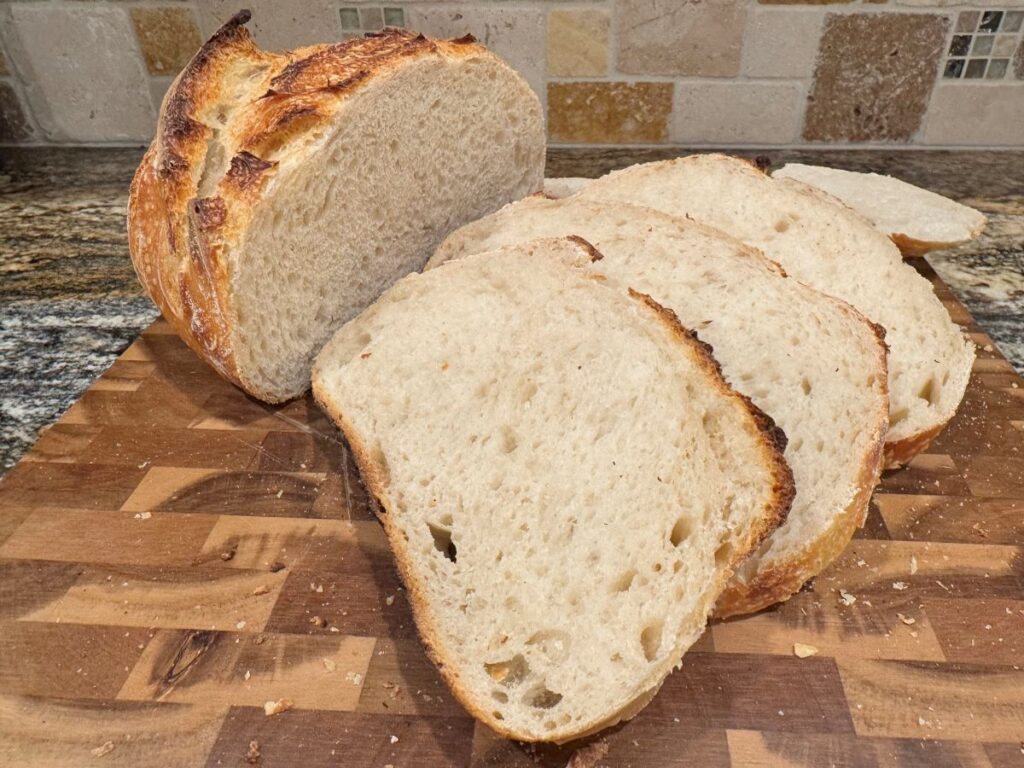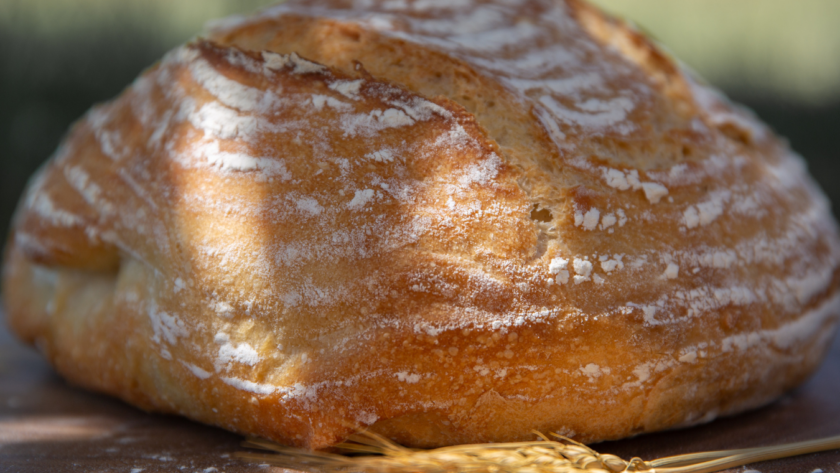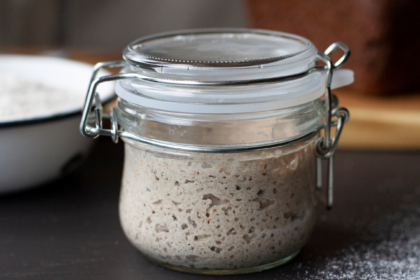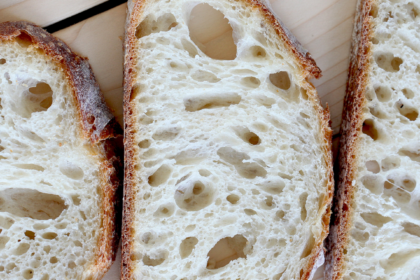Disclaimer: I use affiliate links; if you make a purchase through them, I may receive a small commission at no cost to you.
Baking sourdough bread can feel really intimidating. A quick internet search will turn up hundreds of recipes, all with slightly different instructions, hydration ratios that sound like math homework, and terms you’ve probably never heard before.
But here’s a little secret: it’s not actually that hard. Sure, it can be. Sourdough is an art form, and if you want to go deep into the science, you absolutely can. But it can also just be about baking a really great loaf of bread. I’m still on my own journey to the “perfect” sourdough (spoiler: I’m not there yet), but I’ve picked up a few tips and tricks along the way that might help you get started.
HOT TIP: Before you start baking, make sure you have these items in your kitchen.
The Sourdough Bread Baking Process
There are tons of YouTube videos and beginner tutorials out there to guide you visually through each step. I highly recommend The Perfect Loaf—both the website and the cookbook. The visuals are super helpful for beginners and still valuable for more experienced bakers.
Most basic sourdough recipes follow the same general steps. Since this post is for beginners, I’m skipping the levain (a pre-ferment made from your starter) and focusing on the core process.
Note: This isn’t a recipe—just an outline of the steps. If you’re looking for a great beginner recipe, this one is a solid place to start.
1. Mix the Dough
Combine your sourdough starter, flour, water, and salt.
2. Stretch and Fold
Time may vary, but about every 30 minutes for about 2 hours, gently stretch and fold the dough to develop gluten and strengthen it.
3. Bulk Fermentation
Let the dough rise until it has noticeably increased in volume.
4. Shape and Proof
Shape your dough and place it in a proofing basket. Then let it proof—often overnight in the fridge for a cold ferment.
5. Score and Bake
Score the top of your dough, then bake it in a preheated Dutch oven – covered at first, then uncovered to get a beautiful crust.

Helpful Tips to Build Your Confidence
You’ve probably heard the saying: the hardest step is the first one. That’s especially true with sourdough. Once you’ve got your starter going (I walk you through that here), here are a few tips to help you feel more confident:
Start with a Forgiving Recipe
Look for something simple. Sourdough can get technical fast, but you don’t need to worry about hydration percentages or levains right away. In fact, high-hydration doughs (like 100%) are harder to handle. I often use this beginner recipe with 74% hydration – it’s easy to work with and still produces a light, delicious loaf.
Bake the Same Recipe a Few Times
Repetition is your friend. Each time you bake, you’ll learn something new and get better. Small tweaks will make a big difference over time.
Keep a Baking Journal
Track what you did each time—how long you let it rise, the temperature of your kitchen, how the loaf turned out. These notes are gold when you’re troubleshooting or trying to recreate a great loaf.
HOT TIP: There are journals created specifically for tracking sourdough!
If you have made sourdough bread, what tips do you have to end up with a successful loaf? If you haven’t tried baking bread yet, what is holding you back?
Don’t Compare Your Loaf to Instagram
Your first loaf might be a little… rustic. That’s okay! This is a learning process. You’ll be amazed how quickly you improve.
HOT TIP: If your loaf flops, it might not be you—it might be the recipe. Try a different one!
Trust the Process
Even if you’re unsure, keep going. It takes time to get the hang of sourdough. Once you find your rhythm, it becomes second nature.
And hey—if your bread doesn’t turn out? No big deal. Picasso probably didn’t love every painting either. The hardest part is just starting. If it doesn’t work, tomorrow’s a new day.
Common Mistakes to Avoid
- Using an immature starter – Make sure it passes the float test before baking.
- Under- or over-proofing – I find visual cues helpful here. Use reference photos or videos.
- Not weighing ingredients – A kitchen scale is your best friend. I always weigh in grams for accuracy.
Get Baking!
Once you’re comfortable with the basics, start experimenting! Try new techniques, different flours, or fun mix-ins (jalapeño cheddar, anyone?).
Have you baked sourdough before? What’s your go-to tip for a successful loaf? And if you haven’t tried it yet—what’s holding you back?





